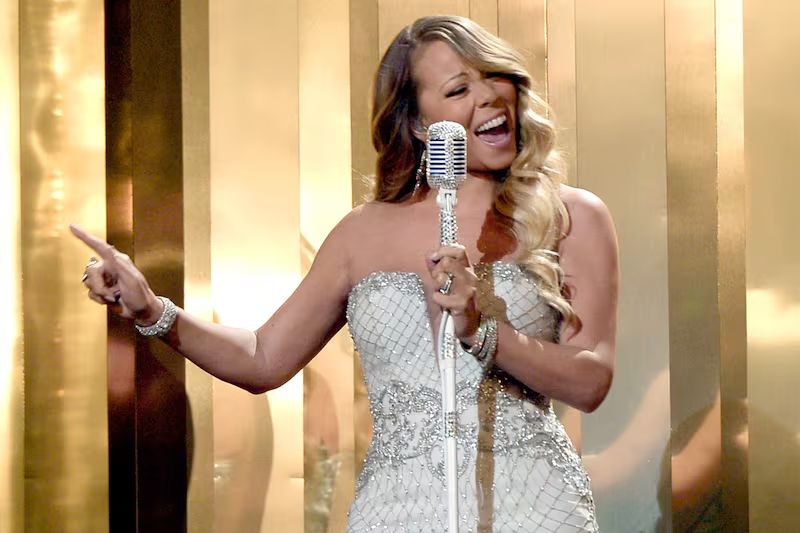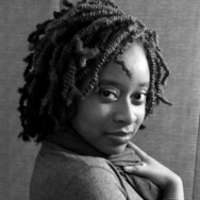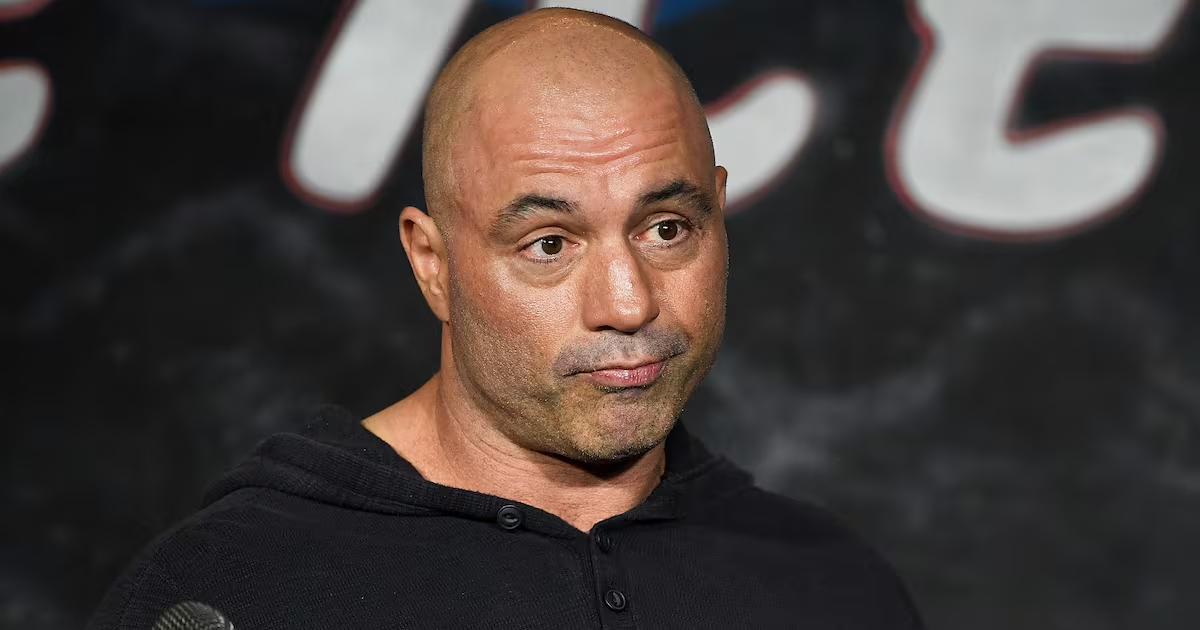Pop music, much like a teenager with a dresser full of training bras and her first summer job, is going through a lot changes. Autotune is widely used, lip syncing is not only expected, but forgiven by listeners, and female singers, once they have their learner’s permit, are supposed to be scantily-clad and open their legs more often than refrigerator doors in a Frigidaire commercial. Yet the biggest change might be the curious disappearance of the diva, a type of singer who reigned supreme during the 1990s.

By “diva,” I don’t mean having hair blown by wind fans while singing or demanding ridiculous items on tour riders or being difficult to work with. What I’m referring to is the main ingredient that makes up a diva: the voice. Diva is defined as “a celebrated female singer; a woman of outstanding talent in the world of opera, and by extension in theatre, cinema and popular music.” And perhaps the ’90s, more so than any other decade, was about the diva.
Yes, Nirvana and gangster rap also reigned supreme, but there was a bubbling rejection of the ’70s singer-songwriter and the ’80s synth pop, singer-dancer, and the burgeoning hip-hop genre. The ’90s was an era that celebrated melisma, a woman standing motionless in front of a microphone and belting out an extraordinary voice. A voice so phenomenal that even if some listeners don’t necessarily enjoy the particular genre the singer works in, the diva’s talent is so undeniable that people will enjoy her. In the ’90s, there was one diva who stood above the rest.
Of course, I’m talking about Mariah Carey. She was the 1990s. That might be a controversial statement that will make you tweet me your cray cray, but I’m right. Let’s set aside personal preference for a moment—for me, Whitney Houston—and look at the facts. During the ’90s, Carey’s five-octave vocal range was probably the closest pop music came to matching Minnie Riperton’s prowess. She garnered 14 No. 1 singles, four No. 1 albums (mind you, she released seven during the decade, meaning that over half her work were colossal successes), and sold over 100 million albums. Then there’s the matter of her prolific nature behind the scenes as she co-wrote and co-produced many of her hits, which was rare for pure female vocalists of that era. Her talent, her consistency to this day, and perhaps, most importantly, the fact that everything she brings to the table makes her the top diva of the ’90s and makes it nearly impossible for her type of career to be replicated. Not that people haven’t tried.
Plenty of acts have attempted to mimic her singing style or her penchant for pairing her soft and sweet vocals with a rapper (ahem, Ariana Grande), but time and time again, we see that none of them have even come close to re-creating Carey’s success or the quality of her music. So it’s only fitting that she’s back with her 13th studio album, I Am Mariah…The Elusive Chanteuse, in hopes of reclaiming her diva crown. Historically speaking, it would be easy to assume that this pop-soul album will be a runaway hit. An assumption like that, given the current musical landscape, might not be wise. To borrow a quote from the 2005 film Hustle & Flow: “It’s hard out here for a diva.”
Less of a premium is placed on vocal ability. Solo acts like Lisa Stansfield or groups like En Vogue and Xscape could sang. Not sing, but sang. Like “older black lady getting possessed by the Holy Spirit” sang. And not just sang in the studio, but sang live. Today, being able to actually sing and sing live is a bonus. And if someone is unable to perform their singing duties, thus relying on autotuning and lip syncing, that no longer kills careers like it did with Ashlee Simpson and Milli Vanilli. In fact, it helps. With the use of computers, most singers can sound like the one-in-a-million talent of Carey, Houston, Christina Aguilera, and Celine Dion.
Meanwhile, music, like film and television, now operates in niches. No longer are there just the basics: pop, rock, classical, gospel, country, R&B, and hip-hop. There’s now rap-rock, EDM (electronic dance music), country rap, trance, Christian pop, punk rock, neo-soul, ska, and dancehall, to name a few. Because there are a plethora of musical styles, there are more options for listeners to choose from, but more importantly, musical acts don’t have to be universal—they simply have to appeal to those of whom are inclined to like their kind of music. So, now, when someone manages to break through to the mainstream, it’s news. Taylor Swift’s biggest album, Fearless, sold 8.6 million copies and was celebrated as a massive success in 2008, even though when Carey’s second album Emotions sold 8 million in ’91, it was considered somewhat of a flop. (Music Box still remains Carey’s biggest success at a whopping 32 million albums sold.)
So with overall album sales not what they used to be, more and more performers are becoming “singles” acts as record companies realize that radio singles were likely to be the only songs from a particular album that were going to be heard, and subsequently, bought. And thanks to the music industry relying heavily on tantalizing videos and so much popular music being influenced by the dance genre, even people who can actually sing quite well like Fergie or Nicole Scherzinger, who has to be one of most glaring examples of mismanaged talent of recent memory, are stuck releasing substandard bubblegum pop music in order to have a career at all.
So where does the Diva belong in 2014? She’s somewhere between a relic and relevant. Celine Dion and Shania Twain, who dominated the ’90s, have been relegated to doing residencies in Las Vegas. Not that this is a bad gig, it’s rather lucrative, but one gets the distinct feeling singers like Dion are being treated by the public like your favorite pair of jeans that don’t quite fit anymore: only trotted out when you’re feeling boozy and want to relive your glory days. But fear not! Even though ’90s divas, for the most part, seem to be past their prime, there is a new, endless crop rising up. That is, until further inspection.
Despite Katie Perry’s popularity, she’s relatively new with only three albums under her belt and her career has been plagued by her inability to sing well live. The prerequisite of a decent voice cancels out other big sellers such as Rihanna, Shakira, and Miley Cyrus, who at this point, is garnering more attention for her antics than whatever musical talent she possesses.
Then there are those who have strong vocals, but have yet to ascend to massive career success or freakish mainstream popularity. American Idol winner Kelly Clarkson has a fantastic voice and quite a few hits, although none of her records since 2004 have cracked 1.5 million units sold. British singer and winner of the X Factor Leona Lewis was groomed to be another Mariah Carey, but unfortunately, she’s been consistently saddled with rather mediocre material, save for the great “Bleeding Love.” While P!nk has consistently put out good music and put up quality record sales, it seems that her music doesn’t appeal to a wide age range of people. Whether folks were young or old when Whitney Houston’s “I Will Always Love You” came out, they most likely were into it. I’m not quite sure the same can be said of P!nk’s greatest hits “Who Knew” or “Get The Party Started.”
We then have the divas-in-training. These songstresses certainly have the talent if not the decades worth of experience. Idol winner Carrie Underwood is known for her spectacular live performances such as “Blown Away” during the 2012 CMAs and she has been inducted into the Country Music Hall of Fame, but her album sales have been on a steady decline since her debut in 2005.
Probably the most interesting of the DITs is Lady Gaga. She started out guns blazing with 15 million units sold for her debut album, The Fame. Sales for her next album, Born This Way, dropped by over half, but her popularity and trend-setting ways were at a fever pitch. Not to mention that greats like Patti LaBelle, Tony Bennett, with whom she is releasing an album later this year, and Elton John all have worked with her and sung her praises. It appears that besides Beyoncé (more on that shortly) Lady Gaga probably has the best chance at having a career that spans multiple decades. Yet she still stumbled with her latest effort, Artpop.
Finally, there are Beyoncé and Adele, who represent divas in 2014. Sure, it may be a tad premature to include Adele as a diva, but if she’s not one yet, she will be soon. She may have less experience than Mrs. Carter, but she’s only 1 million shy of Beyoncé’s 36 million record sales and she got to 35 with half the output (she has two albums, while Beyoncé has five). Plus, her voice, as well as Beyoncé’s, is undeniable and they both have the respect of the industry. But what’s most notable is that even though it seems like the music industry is only pushing one kind of sound and look, these two ladies represent two completely different kinds of singers.
Adele is the classic elusive singer/songwriter. We don’t know much about her other than what’s in her songs and what the media has been privy to, which is that she’s now married and a mother of one child. She doesn’t have an active social media life (she has no Instagram). Meanwhile, Beyoncé represents more of what music is today. She sings, dances, and co-writes a lot of her material as well as does tons of endorsements, Pepsi and H&M just to name a few, and isn’t shy about showing skin. And she’s a social-media powerhouse with over 12 million followers on Instagram and over 13.4 million on Twitter. Clearly, these women are wildly different, yet they are both divas.
So while the divas are fewer in number in 2014, they are far from extinct. There are no better women than Beyoncé and Adele to carry the mantle. And if Mariah Carey has anything to say about this, she’ll be right next to them, kicking and singing. As long as there’s a wind fan blowing back her hair.





